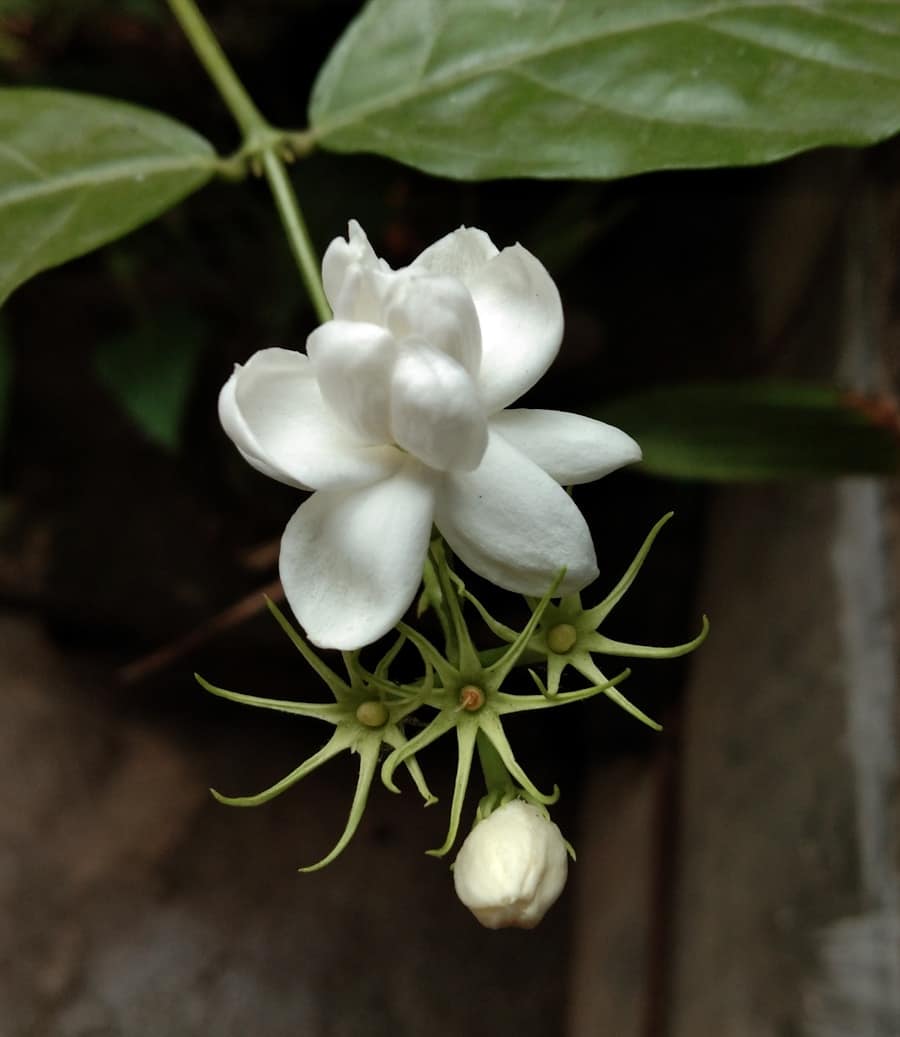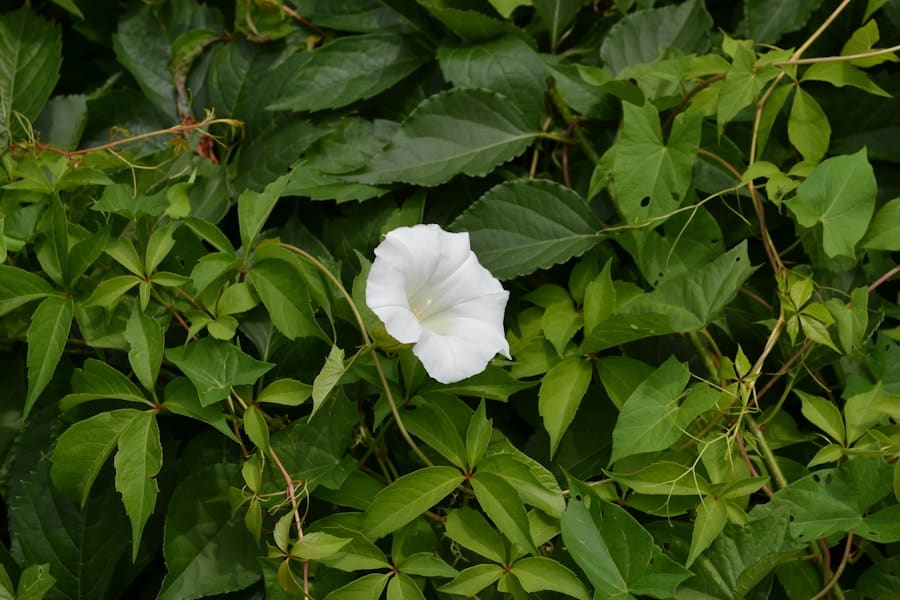As I delve into the world of gardening, I find myself captivated by the beauty and versatility of white flowering vines. These enchanting plants not only add a touch of elegance to any garden but also serve various practical purposes. With their delicate blooms and lush foliage, white flowering vines can transform ordinary spaces into breathtaking landscapes.
Whether I am looking to create a serene retreat in my backyard or add a striking focal point to my front porch, these vines offer an array of options that can suit any aesthetic. White flowering vines are not just visually appealing; they also carry a rich history and cultural significance. Many of these plants have been cherished for centuries, often symbolizing purity, innocence, and new beginnings.
As I explore the different varieties and their unique characteristics, I am reminded of how these vines can evoke emotions and memories, making them a meaningful addition to my garden. In this article, I will share insights into the characteristics, care, and uses of white flowering vines, as well as the benefits and potential challenges they may present. Visit Our Site for more information about our products.
Key Takeaways
- White flowering vine adds a touch of elegance and beauty to any garden or landscape
- It is known for its fast growth and ability to cover unsightly structures or provide shade
- White flowering vine requires well-drained soil, regular watering, and full sun to thrive
- Some popular varieties of white flowering vine include jasmine, clematis, and moonflower
- White flowering vine can be used in landscaping to create privacy, add vertical interest, and attract pollinators
Characteristics of White Flowering Vine
One of the most striking features of white flowering vines is their ability to produce an abundance of delicate white blooms. These flowers can range from small, star-shaped blossoms to larger, more intricate petals that create a stunning visual display.
This not only enhances the beauty of my garden but also supports local ecosystems. In addition to their beautiful flowers, white flowering vines typically exhibit lush green foliage that provides a vibrant backdrop for their blooms. The leaves can vary in shape and size, adding texture and depth to the overall appearance of the plant.
Some varieties may have glossy leaves that catch the sunlight beautifully, while others may feature a more matte finish. As I consider incorporating these vines into my garden, I appreciate how their foliage can create a sense of fullness and vitality, making them an excellent choice for vertical gardening or as ground cover.
Growing and Caring for White Flowering Vine

Growing white flowering vines can be a rewarding experience, but it does require some attention to detail. First and foremost, I need to consider the specific growing conditions that each variety prefers. Most white flowering vines thrive in well-drained soil with plenty of organic matter.
As I prepare my garden bed, I make sure to amend the soil with compost to provide essential nutrients that will support healthy growth. Additionally, I pay close attention to sunlight requirements; while some varieties prefer full sun, others may thrive in partial shade. Watering is another crucial aspect of caring for white flowering vines.
I have learned that consistent moisture is key, especially during the initial stages of growth. However, it is equally important to avoid overwatering, as this can lead to root rot. I often check the soil moisture by sticking my finger into the ground; if it feels dry an inch below the surface, it’s time to water.
As the vines mature, I also make it a point to prune them regularly to encourage bushier growth and remove any dead or diseased branches. This not only keeps the plant healthy but also enhances its overall appearance.
Popular Varieties of White Flowering Vine
| Variety | Height (ft) | Spread (ft) | Bloom Time |
|---|---|---|---|
| Madame Galen Trumpet Vine | 30-40 | 5-10 | Summer to Fall |
| White Japanese Wisteria | 25-30 | 4-8 | Spring to Early Summer |
| White Lady Banks Rose | 20-30 | 10-20 | Spring |
| White Trumpet Creeper | 20-30 | 4-8 | Summer to Fall |
As I explore the diverse world of white flowering vines, I come across several popular varieties that stand out for their unique characteristics and beauty. One such variety is the Trachelospermum jasminoides, commonly known as star jasmine. This vine produces clusters of small, fragrant white flowers that bloom in late spring and early summer.
The glossy green leaves provide an attractive backdrop for the blooms, making it a favorite among gardeners looking for both beauty and fragrance. Another captivating option is the Clematis ‘Henryi,’ which is renowned for its large, pure white flowers that can reach up to six inches in diameter. This vigorous climber is perfect for trellises or arbors, where it can showcase its stunning blooms against a backdrop of lush greenery.
As I consider my own garden design, I find myself drawn to these varieties for their ability to create dramatic visual impact while also attracting pollinators.
Uses of White Flowering Vine in Landscaping
Incorporating white flowering vines into my landscaping design opens up a world of creative possibilities. One of the most common uses is to cover unsightly structures such as fences or walls. By training these vines to climb vertically, I can transform a plain surface into a lush tapestry of greenery and blooms.
This not only enhances the aesthetic appeal of my property but also provides privacy and shelter from wind. Additionally, white flowering vines can be used to create stunning focal points in my garden. By planting them near entryways or patios, I can draw attention to these areas and invite guests to explore further.
The cascading blooms can soften hardscapes and add a touch of romance to outdoor spaces. Furthermore, I often use these vines in combination with other plants to create layered landscapes that offer visual interest throughout the seasons.
Benefits of White Flowering Vine

The benefits of incorporating white flowering vines into my garden extend beyond mere aesthetics. One significant advantage is their ability to attract beneficial insects such as bees and butterflies. By providing a food source for these pollinators, I contribute to the health of my local ecosystem while enjoying the beauty they bring to my garden.
Additionally, many white flowering vines are known for their ability to improve air quality by filtering pollutants and releasing oxygen. Another benefit that I appreciate is their versatility in various landscaping applications. Whether I am looking to create a vertical garden on a trellis or add ground cover to prevent soil erosion, white flowering vines can adapt to different roles within my landscape design.
Their fast growth rate means that they can quickly fill in spaces and provide coverage where needed, making them an excellent choice for gardeners seeking immediate results.
Potential Issues with White Flowering Vine
While white flowering vines offer numerous benefits, they are not without potential challenges that I must consider as a gardener. One common issue is their tendency to become invasive if not properly managed. Some varieties can spread rapidly and outcompete native plants for resources, leading to imbalances in local ecosystems.
To mitigate this risk, I make sure to choose non-invasive species and monitor their growth closely. Another concern is susceptibility to pests and diseases that can affect the health of my vines. Aphids, spider mites, and powdery mildew are just a few examples of issues that may arise.
To combat these problems, I stay vigilant by regularly inspecting my plants for signs of distress and taking action promptly when necessary. This may involve using organic pest control methods or adjusting my care routine to promote healthier growth.
Conclusion and Final Thoughts on White Flowering Vine
In conclusion, my journey into the world of white flowering vines has been both enlightening and rewarding. These beautiful plants offer an array of characteristics that make them ideal for various landscaping applications while providing numerous benefits for both my garden and the environment.
As I reflect on my experiences with these enchanting plants, I am reminded of the importance of careful planning and maintenance in ensuring their success. By understanding their needs and potential challenges, I can create a thriving garden that showcases the beauty of white flowering vines while contributing positively to my local ecosystem. Ultimately, these vines serve as a reminder of nature’s elegance and resilience—a true testament to the joy that gardening brings into my life.
If you are interested in growing beautiful plants with white flowers, you may also want to check out this article on

